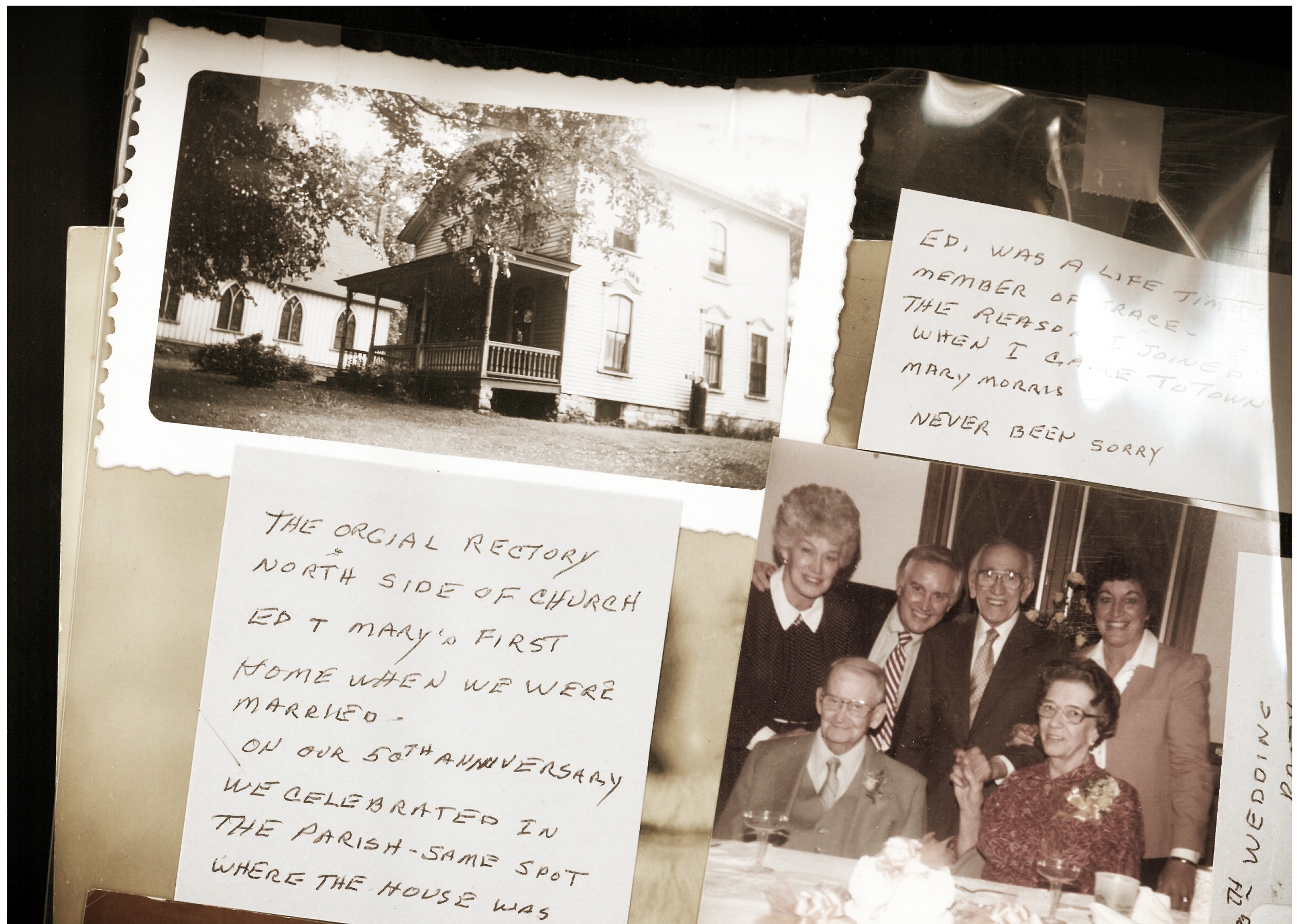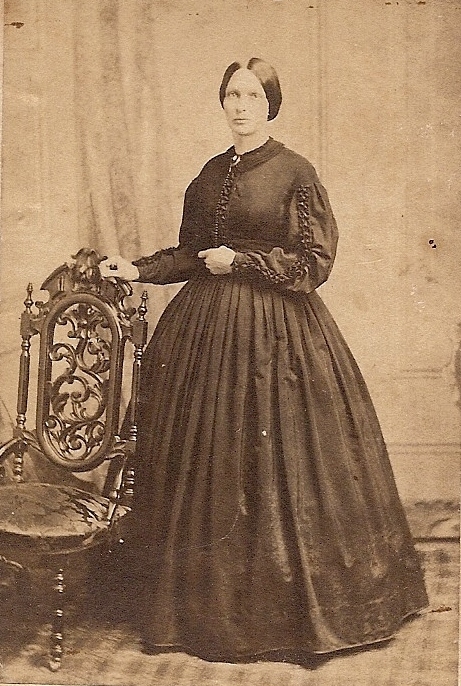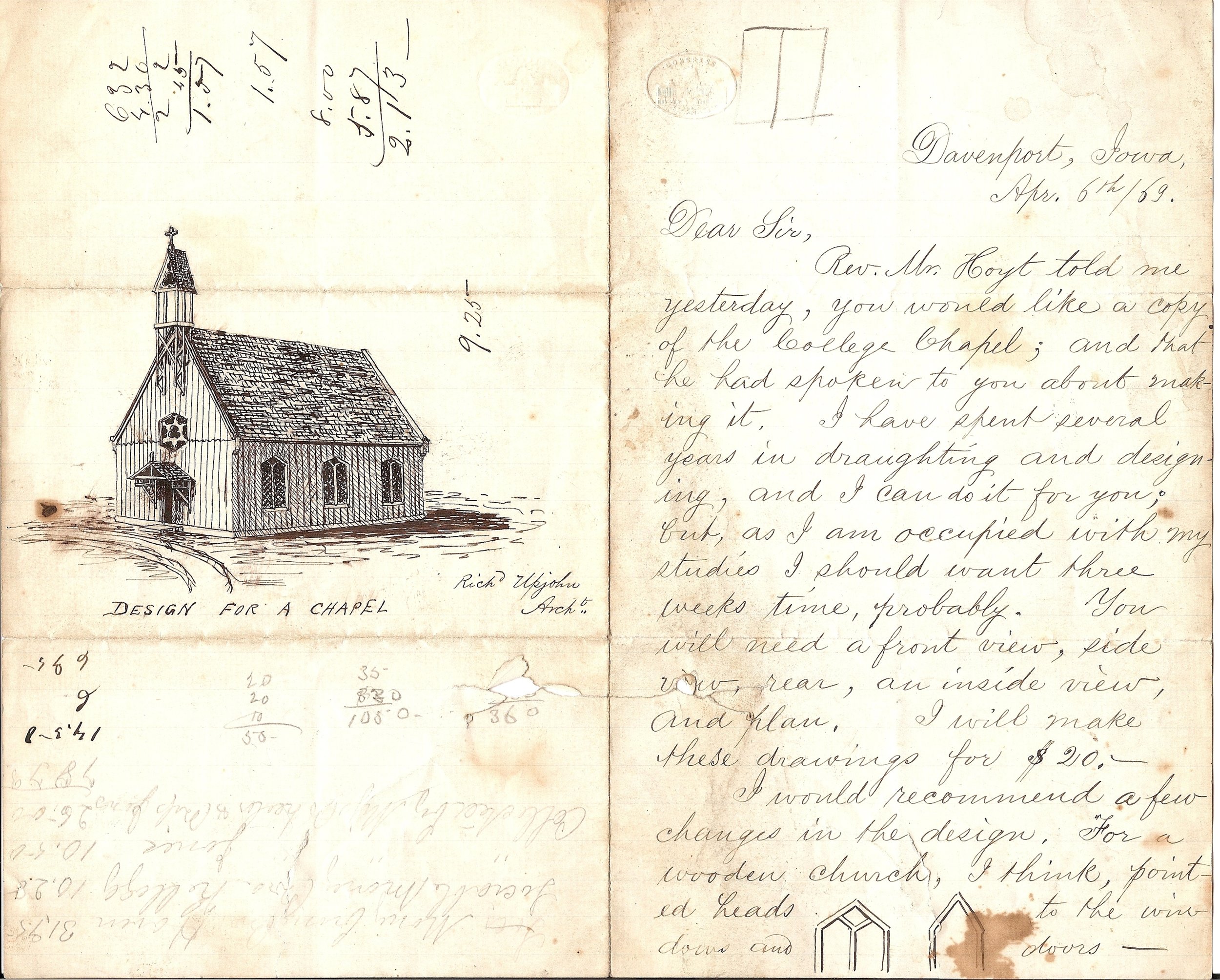
A virtual history of historic Grace Church
A History and Timeline of Grace Episcopal Church New Lenox
Researched by Pam Bloom, Grace Church Historian 1999-Present (Rev. 2025)
1868
November 22
The first service was held in the Methodist Meeting House which was located on Hickory St. between Cedar Rd. and Pine St. (the building no longer stands). Several families living in the New Lenox area asked the Rev. Sam Cowell, rector at St. Paul’s Episcopal Church, Manhattan, IL, to conduct services. Manhattan records say: “Rev. Cowell had charge of the Missionary Station at New Lenox – Will, Co., where he organized a Parish under the name of Grace Church and secured the erection of a [unintelligible] for public worship. He came by horse & buggy. This began a ‘yoked’ relationship between the two churches. It was hoped [that] the two parishes combined would support a Minister between them.”
1869
While the Rev. Cowell continues to serve both Grace and St. Paul’s Manhattan, the search begins in earnest for a suitable site for the church. The Building Committee included Horace Wood, James Jones, and Caleb John Jones. Caleb and Alice Jones, founding members, had three children; Lawn Jones Morris, Legh Jones and Bessie Jones).
Late 19th Century Illustrated Map of the Diocese of Chicago, zoomed in on the area surrounding and including New Lenox. St. Paul’s Manhattan is visible to the south of Grace Church, although the church was closed in the 1960’s.
April 6, 1869
Caleb Jones asked B.R. Phelps, Jr., for a copy of the “College Chapel” book (See Letter Images Below). He then requested that he make drawings to build Grace in a style similar to Christ Church in West Davenport, IA. Phelps made the drawings for $20.00. The Prairie Gothic style was designed by New York’s Richard Upjohn, a well-known architect.
September 29, 1869
Two young residents, Thornton Haines and Ward Knickerbocker offered, free of charge, a lot north of Hickory Creek, southwest of Cedar Road. Materials had been delivered and excavation for the foundation completed when a very desirable location south of Route 30 was offered instead. On September 29th, 1869, this new lot was purchased from Austin Page at the northwest corner of Pine and Hickory Streets, in New Lenox, 160 feet by 160 feet, for $45. A second adjacent lot at this location would later be purchased from Austin Page in September of 1873 for another $45.
1870
September 4 – First Service in the Sanctuary
“Opened for Devine Service” — First service held in the Grace Church Building. Windows were boarded, rough-hewn benches used for pews, and a box covered by a red cloth for an altar. The church was literally built around members as they worshipped. In a letter to Bishop Whitehouse, dated September 12, 1870, published in the Journal of Convention that year, the Rev. Cowell describes the service as “very glad,” and adds “It was a great day of jubilee; the day beautiful; the crowd unable to find entrance; Church people from Manhattan, Lockport, Joliet, New Lenox; the Joliet choir and choice music; three surplices in the Chancel; an eloquent, manly sermon, from Rev. Mr. Turner, upon the text, ‘The Lord is in his Holy Temple: let all the earth keep silence before him”; a large collection and a generous hospitality….
1871
February 1, 1871
The Journal of the Diocese of Illinois records that on this date, the Rev. Erastus DeWolf officially took charge of both the parish of Grace New Lenox, in connection with St. Paul’s Manhattan.
Excerpt from the Diocese of Illinois’ Journals, 1871.
August 25
The Rev. Erastus DeWolf presented the first confirmation class to Bishop Henry Whitehouse. The first person to be confirmed was Mrs. William Gougar, Sr. A brass cross placed on the altar in her memory was engraved: In Memoriam of Clarissa Anna Gougar 1839-1899.
October 8-10
The Great Chicago Fire of October 8-10, 1871 was an event of such enduring fame not just because of the dramatic nature and enormous extent of the devastation, but also because of when and where it occurred. By the early 1870s, it was clear to Americans that the United States was being transformed into an urban industrial nation and that Chicago more than any other city seemed to embody that continuing transformation.
1872
June
The Rev. DeWolf presented a second class for confirmation. This was the last visit of Bishop Whitehouse to Grace, as he died young two years in later in 1874.
1873
A second lot (north) next to the church is purchased from Austin Page for $45. This would become home to the parsonage, later known as a rectory or vicarage. After that, the property became home to the parish hall.





